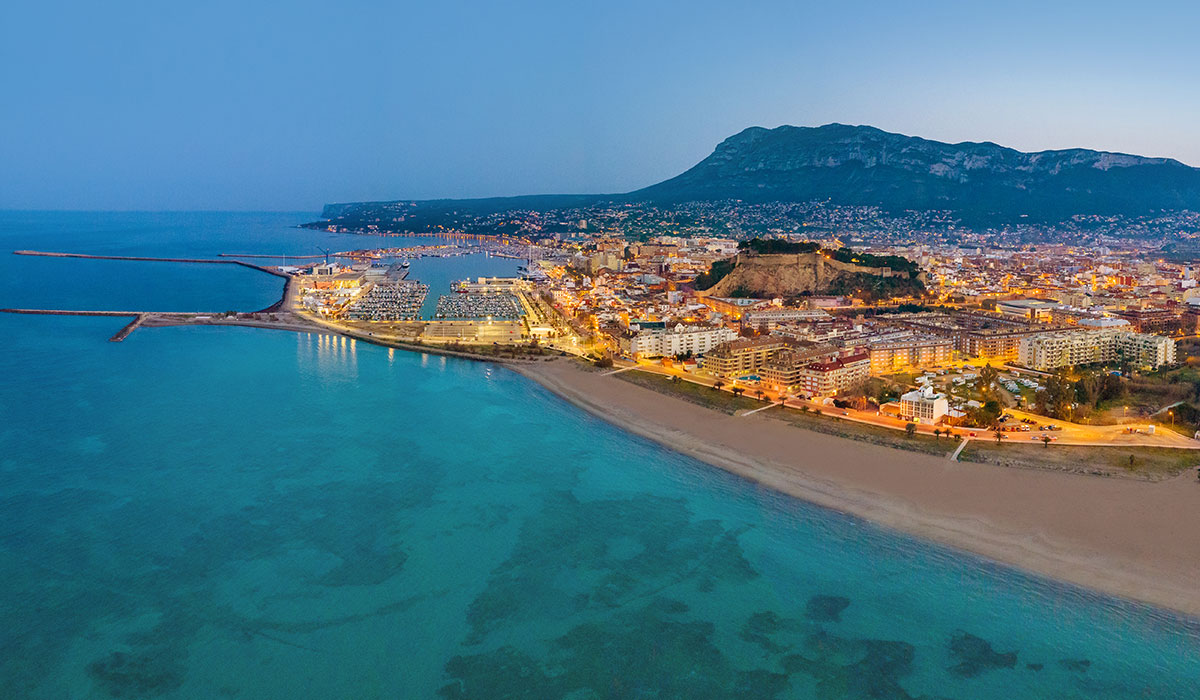Top Stories
Urgent Warning: Blue Dragons Found on Costa Blanca Beaches

URGENT UPDATE: Holidaymakers in Spain are facing a critical warning as the dangerous sea creature known as the blue dragon, or Glaucus atlanticus, has been spotted on popular beaches along the Costa Blanca. Authorities have placed a complete swimming ban on a seven-mile stretch of coastline following multiple sightings, urging all visitors to exercise extreme caution.
Red flags are currently flying at beaches in Guardamar del Segura, just north of Torrevieja, indicating that swimming is strictly prohibited. This warning comes after two blue dragons were found on Vivers Beach, prompting immediate action from local officials. Mayor Jose Luis Saez confirmed the ban and emphasized the potential risks associated with these creatures.
The blue dragon is notorious for its potent sting, which can cause severe symptoms such as nausea, intense pain, vomiting, and allergic reactions. It absorbs the venomous cells from its prey and uses this concentrated venom to attack. Swimmers are being warned not to touch the creature, even with gloves, and to alert lifeguards if spotted.
In addition to Guardamar del Segura, a red flag was also raised at Santa Barbara beach near Gibraltar. Initial reports indicate that six specimens have been found along the shoreline, prompting heightened vigilance among beachgoers. Following this, Santa Barbara beach reopened with a yellow warning flag, allowing swimming with a cautionary note.
Mayor Saez has issued a strong reminder to the public: “If you see one of these creatures, do not touch it. Alert lifeguards and authorities immediately. If you get stung, wash the affected area with salt water and seek medical assistance.”
This alarming situation serves as a stark reminder for holidaymakers to be aware of their surroundings while enjoying the beautiful Spanish beaches. With peak tourist season still underway, the impact of this warning could significantly affect beach activities and local tourism.
Authorities are continuing to monitor the situation closely, and preventative operations are underway to detect any further appearances of these dangerous sea creatures. Visitors are encouraged to stay informed and adhere to safety guidelines to ensure a safe holiday experience.
Stay tuned for updates as this story develops.
-

 Top Stories3 months ago
Top Stories3 months agoTributes Surge for 9-Year-Old Leon Briody After Cancer Battle
-

 Entertainment4 months ago
Entertainment4 months agoAimee Osbourne Joins Family for Emotional Tribute to Ozzy
-

 Politics4 months ago
Politics4 months agoDanny Healy-Rae Considers Complaint After Altercation with Garda
-

 Top Stories4 months ago
Top Stories4 months agoIreland Enjoys Summer Heat as Hurricane Erin Approaches Atlantic
-

 World5 months ago
World5 months agoHawaii Commemorates 80 Years Since Hiroshima Bombing with Ceremony
-

 Top Stories3 months ago
Top Stories3 months agoNewcastle West Woman Patricia Foley Found Safe After Urgent Search
-

 Top Stories5 months ago
Top Stories5 months agoFianna Fáil TDs Urgently Consider Maire Geoghegan-Quinn for Presidency
-

 World5 months ago
World5 months agoCouple Convicted of Murdering Two-Year-Old Grandson in Wales
-

 World5 months ago
World5 months agoGaza Aid Distribution Tragedy: 20 Killed Amid Ongoing Violence
-

 World5 months ago
World5 months agoAristocrat Constance Marten and Partner Convicted of Infant Murder
-

 Top Stories4 months ago
Top Stories4 months agoClimbing Errigal: A Must-Do Summer Adventure in Donegal
-

 Top Stories4 months ago
Top Stories4 months agoHike Donegal’s Errigal Mountain NOW for Unforgettable Summer Views









